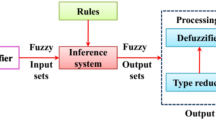Abstract
Although the sensor node is tiny, it covers large areas by connecting these nodes together wirelessly, it called wireless sensor network (WSN). WSNs are one of the common things that still evolving very fast nowadays. Routing protocols challenge the energy consumption of wireless sensor networks. In this paper, we proposed a new Fuzzy Logic and Genetic Algorithm based protocol (FL-GA) for WSNs, as follows, we used the fuzzy logic Mamdani method for finding the best cluster heads. We used two inputs for fuzzy, energy and distance, we used the Genetic Algorithm for optimization. Taking into account variable parameters, the choice of cluster heads will be more efficient and the cluster forming will be more accurate, all the nodes will almost die at the same time. One of the classic routing protocols is the Low Energy Adaptive Clustering Hierarchy (LEACH) protocol. We compared our protocol to the LEACH protocol. Our network nods, still alive much more than the LEACH protocol nodes. The proposed method is more efficient in extending the network lifetime and maximizing the total number of data packets received in the sink.
Access this chapter
Tax calculation will be finalised at checkout
Purchases are for personal use only
Similar content being viewed by others
References
Yick J, Mukherjee B, Ghosal D (2008) Wireless sensor network survey. Comput Netw 52:2292–2330
Sohrabi K, Gao J, Ailawadhi V, Pottie GJ (2000) Protocols for self-organization of a wireless sensor network. IEEE Pers Commun 7
Akyildiz IF, Su W, Sankarasubramaniam Y, Cayirci E (2002) Wireless sensor networks: a survey. Comput Netw 38(4):393–422
Mihajlov B, Bogdanoski M (2011) Overview and analysis of the performances of ZigBee based wireless sensor networks. Int J Comput Appl 29:28–35 (0975 – 8887)
Maraiya K, Kant K, Gupta N (2011) Application based study on wireless sensor network. Int J Comput Appl 21:9–15 (0975 – 8887)
Ming LY, Wong VW (2006) An energy-efficient multipath routing protocol for wireless sensor networks. Int J Commun Syst 20(7):747–766
Xu Y, Govindan R, Estrin D (2001) Geographical and energy aware routing: a recursive data dissemination protocol for wireless sensor networks. Technical report UCLA/CSD-TR-01-0023, UCLA Computer Science Department
Heinzelman W, Chandrakasan A, Balakrishnan H (2000) Energy-efficient communication protocol for wireless microsensor networks. In: Proceedings of the 33rd annual Hawaii international conference on system sciences (HICSS), Maui, HI, January 2000
Intanagonwiwat C, Govindan R, Estrin D (2000) Directed diffusion: a scalable and robust communication paradigm for sensor networks. In: Proceedings of ACM MobiCom, Boston USA, pp 56–67. ACM
Heinzelman WB, Chandrakasan AP, Balakrishnan H (2002) An application-specific protocol architecture for wireless microsensor networks. IEEE Trans Wireless Commun 1(4):660–670
Kang SH, Nguyen T (2012) Distance based thresholds for cluster head selection in wireless sensor networks. IEEE Commun Lett 16(9):1396–1399
Jin S, Zhou M, Wu AS (2003) Sensor network optimization using a genetic algorithm. In: Proceedings of the 7th world multiconference on systemics, cybernetics and informatics
Gupta I, Riordan D, Sampalli S (2005) Cluster-head election using fuzzy logic for wireless sensor networks. In: Proceeding of the 3rd annual conference on communication networks and services research, pp 255–260. IEEE Computer Society Washington
Author information
Authors and Affiliations
Corresponding author
Editor information
Editors and Affiliations
Rights and permissions
Copyright information
© 2021 Springer Nature Singapore Pte Ltd.
About this paper
Cite this paper
Alwafi, A.A.W., Rahebi, J., Farzamnia, A. (2021). A New Approach in Energy Consumption Based on Genetic Algorithm and Fuzzy Logic for WSN. In: Md Zain, Z., et al. Proceedings of the 11th National Technical Seminar on Unmanned System Technology 2019 . NUSYS 2019. Lecture Notes in Electrical Engineering, vol 666. Springer, Singapore. https://doi.org/10.1007/978-981-15-5281-6_72
Download citation
DOI: https://doi.org/10.1007/978-981-15-5281-6_72
Published:
Publisher Name: Springer, Singapore
Print ISBN: 978-981-15-5280-9
Online ISBN: 978-981-15-5281-6
eBook Packages: Intelligent Technologies and RoboticsIntelligent Technologies and Robotics (R0)




